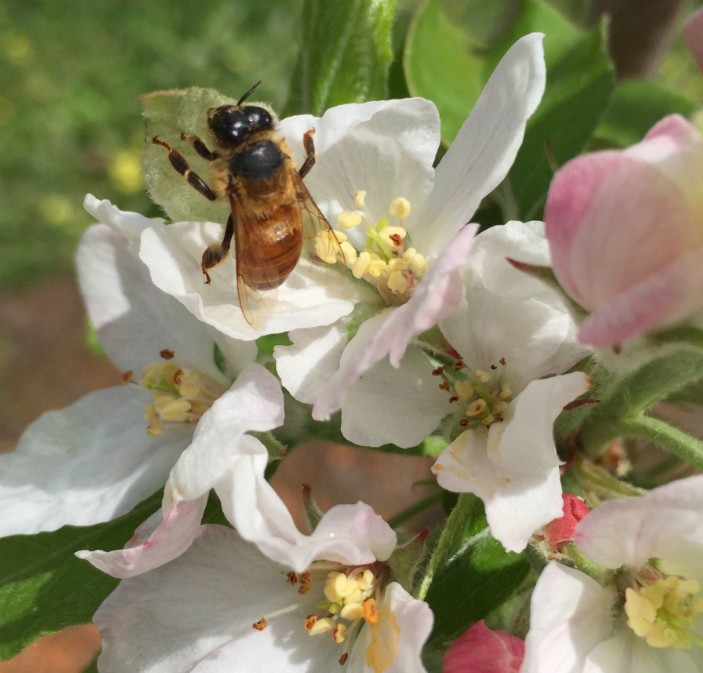As the 2019 production season draws closer it’s time to think pollination. By now you should already have had or are having discussions with your beekeeper about your pollination requirements for this season including the number of hives, the hive’s strength (number of bees per hive) and their position(s) in the orchard.
Although it is the beekeeper’s obligation to provide you with strong, healthy hives. It is your obligation to ensure they stay strong, not just to keep your beekeeper on side but to ensure you get the best bang for your buck as ‘healthy hives = good pollination’.
Like many aspects of IPM including maintaining predator and parasitoid populations, crop pollination can be improved by good ground cover management to ensure a diverse diet is provided to the bees.
Although it was previously believed that the removal of other flowering plants including weeds on the orchard floor would force the bees to pollinate your crop, it is increasingly being recognised that having diverse floral sources in or around the crop helps provide the bees (and natural enemies) with a healthy diet, which ensures healthy bee numbers are maintained and you get better crop pollination. After all, to stay healthy we don’t want to eat the same thing every day and neither do bees.
Similarly, you also need to consider what impact your spray program could have on the health of the hives as even trace quantities (as low as 5 parts per billion) of many insecticides and fungicides can have a detrimental impact on the hive’s health, which again will impact on how well your crop will be pollinated. If you do need to spray let your beekeeper know.
Further Information:
NSW Agriculture AgNote: Pollination of Apples by Honey Bees https://www.dpi.nsw.gov.au/__data/assets/pdf_file/0018/117108/bee-apple-pollination.pdf
Article reviewed by Alison Mathews (WA DPIRD)

